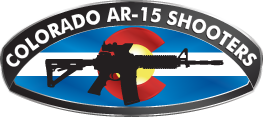To ellaborate on MarkCO's point
(NERD ALERT!).
Yes there will be a bit of pressure, but less than
2 bar (2x standard atmospheric pressure). Consider that a 308's max SAMMI is about
4,500 bar in the chamber. It will be somewhat lower than that by the time it gets to the can, but you are still talking thousands of time higher pressure during the shot than with residual pressure.
If anything, the heating of the barrel would be the first place to have a significant reaction. Between heating, and swelling and a slight change in its metallurgic stiffness (K = M/phi) wherein metal becomes more maliable as it heats up, you would see changes several fold more significant than pressure changes. I'm still not sure its enough to cause these big differences, but it may be measurable as some fraction of an MOA on a target. Changing the Length and end weight on a barrel (with a can) could conceivably produce more change due to heating:
Lets consider a more direct approach at determining the stiffness of the barrel,
K = nAE/L. N is a constant for a given material, considering the boundary conditions and A is a constant considering the cross sectional area of the material, and E is a constant considering the elasticity of the material (all constant for this problem as we aren't swapping the material). As we don't want a value but merely a rough picture of the system, lets assume n=1 and A=1 and E=1 for this material, and throw them out, so we have (K=1*1*1)/L, therfore K (stiffness) = 1/L (length. So we see as Length goes up, our stiffness goes down. This proves there will be some change in POI due to a change in stiffness by adding length to the system.
Yes there is a flaw in this logic, as n,A,E are different between the supressor and the barrel. But we could come up with some approximation for the suppressor as a smaller increase in the length of the barrel that will behave the same. So we still know L is going up. Therefore, stiffness goes down.
Lets also consider that the amount of deflection is related to the moment of inertia vs the moment of force applied to the barrel. Again we have K=M/phi. Lets rewrite that as phi = M/K, where phi is the amount of barrel deflection, M is the moment of force applied, and K is the stiffness. We know that K has gone down, which means a bigger phi, deflection. But we have not yet considered M. M is the summation of all moments of force throughout the system, an integration from start to end for those with some calculus background. Lets consider than the barrel will have the same forces applied to it with can on, or can off. This can be ignored. We can therefore account (to a second order approximation) for only the moment of force applied to the can. While smaller than that applied to the barrel, because only pressure puts force on the can rather than the projectile itself, this smaller force will be enhanced by its radial distance from our pivot point (considering the barrel as a pivot around the action, as it moves more closely to a radial system than a linear system). And some copy/paste from my formula editor
 is the radial equation for moment of inertia in a radial system. As we can see, the moment of inertia increases exponentially with increased radius. Because radius is squared, we get large gains as we increase the radius upon which the force is applied. So even the smaller forces there play a role due to increased radius. So now we have phi = M/K, where K is getting smaller, and M is getting bigger both as heat increases, so we may see some noticeable observations depending on how much each change. Running rough numbers, I come up with something at least measurable, but even my most overly liberal estimations put it just over 1MOA.
is the radial equation for moment of inertia in a radial system. As we can see, the moment of inertia increases exponentially with increased radius. Because radius is squared, we get large gains as we increase the radius upon which the force is applied. So even the smaller forces there play a role due to increased radius. So now we have phi = M/K, where K is getting smaller, and M is getting bigger both as heat increases, so we may see some noticeable observations depending on how much each change. Running rough numbers, I come up with something at least measurable, but even my most overly liberal estimations put it just over 1MOA.
Conclusion: You get better accuracy when you go slow, because everyone gets better accuracy when they go slow and take their time on a shot.
If you've made it this far, thanks for nerding out with me for at least a few minutes. 







 Reply With Quote
Reply With Quote






